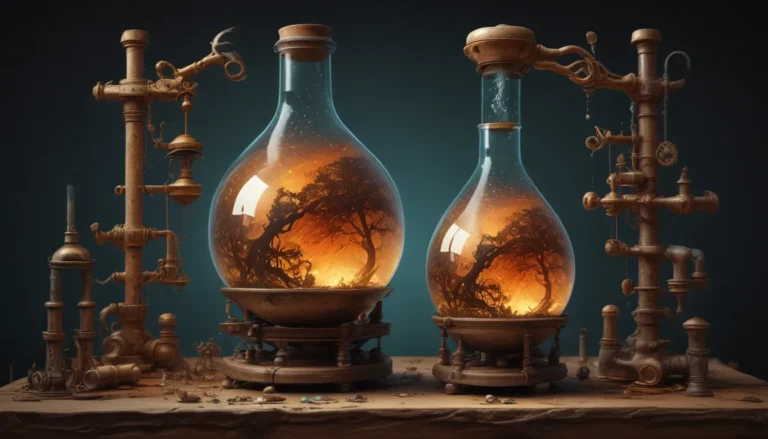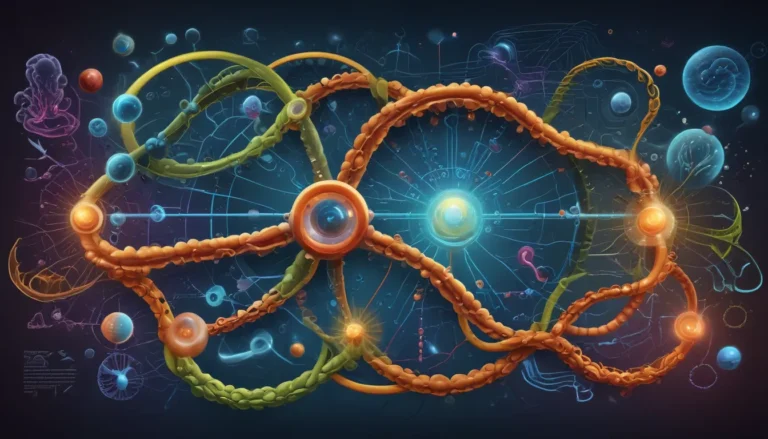A Note About Images: The images used in our articles are for illustration purposes only and may not exactly match the content. They are meant to engage readers, but the text should be relied upon for accurate information.
Welcome to the fascinating world of nitrogen! You may have heard of this essential element before, perhaps in your science classes at school. But did you know that nitrogen plays a vital role in our everyday lives? From the air we breathe to the food we eat, nitrogen is all around us, shaping the world in ways we may not even realize. Join us on a journey of discovery as we delve into the intriguing world of nitrogen and uncover some surprising facts that will leave you in awe of this amazing element.
Unveiling the Nitrogen Mysteries
Quick Facts
- The name Nitrogen originates from the Greek words ‘nitron’ and ‘genes’, meaning ‘nitre forming’.
- Nitrogen is a dormant gas that is colorless, tasteless, odorless, diatomic, and non-toxic under normal conditions.
- It is also known as ‘burnt air’ or ‘dephlogisticated air’, signifying ‘air without oxygen’.
- Nitrogen is a nonmetallic element in Group 15 of the periodic table.
- Unlike carbon dioxide, nitrogen is insoluble in water and alkaline solutions.
Essential Facts
- The Earth’s atmosphere comprises 78.09% nitrogen gas by volume and 75.51% by weight.
- Nitrogen has an atomic number of 7 and an atomic weight of 14.
- Its total mass is 14.0067 u.
- The boiling point of nitrogen is 195.8 °C or -320.4 °F.
- At 0°C/32°F and 101.325 kPa, the density of nitrogen is 0.07807 lb/cubic foot.
- Nitrogen can be found in soil, organic compounds, and certain mineral deposits.
- Despite being inert, many nitrogen compounds are unstable.
- The nitrogen cycle is a crucial process for the existence of living organisms.
- Commercial nitrogen production involves fractional distillation of air.
- Nitrogen has poor conductivity for heat and electricity.
Interesting Facts
- Nitrogen constitutes approximately 2.5% of the mass of living organisms.
- It is the 4th most abundant element in the human body.
- Globally, nitrogen ranks 7th in abundance.
- Nitroglycerin, a nitrogen compound, is used to treat angina.
- Liquid nitrogen can cause severe frostbite upon skin contact.
The Cosmic Nitrogen Cycle
Stars heavier than the sun play a significant role in the creation of nitrogen through the CNO cycle. This process involves the regeneration of carbon-12 and the production of helium nuclei by consuming hydrogen nuclei. The intricate interplay of elements in the cosmos highlights the beauty of nature’s creations.
Unveiling Nitrogen: A Historical Journey
Daniel Rutherford’s Discovery
In 1772, the pioneering chemist-physician Daniel Rutherford made a groundbreaking discovery by isolating nitrogen from the air. Through meticulous experiments, Rutherford identified the unique properties of this gas, paving the way for further scientific exploration.
The Evolution of Nitrogen Knowledge
Centuries before Rutherford, English physician John Mayow hypothesized the presence of multiple substances in air, laying the foundation for future discoveries. Subsequent research by Scottish chemist Joseph Black refined our understanding of air composition and led to pivotal advancements in the field of chemistry.
The Many Facets of Nitrogen
Nitrogen in Electronics
In the realm of electronics manufacturing, nitrogen plays a crucial role in preventing overheating and enhancing fire suppression systems for IT equipment. Its inert nature makes it a valuable resource in ensuring the smooth operation of electronics.
Nitrogen in Pharmaceutics
The pharmaceutical industry heavily relies on nitrogen for its chemical properties and role in various compound reactions. Surprisingly, nitrogen is a common element in major drug classes, underpinning the foundation of pharmacological advancements.
Nitrogen’s Medicinal Applications
Beyond its industrial uses, nitrogen has found a place in medicine as an anesthetic agent when combined with other compounds. Its versatility extends to the preservation of biological specimens, such as blood, nerves, stem cells, and reproductive cells.
Cryogenic Potential of Liquid Nitrogen
Liquid nitrogen serves as a potent refrigerant, enabling the achievement of ultra-low temperatures essential for various scientific and industrial applications. Its cost-effective nature and superior cooling capabilities make it a valuable tool in diverse fields.
Join Us in the World of Nitrogen
As we unravel the mysteries of nitrogen, we invite you to explore the vast possibilities and applications of this remarkable element. From its cosmic origins to its practical uses in everyday life, nitrogen continues to captivate us with its unique properties and profound impact on our world. Let us embark on this journey together, celebrating the wonders of nitrogen and expanding our knowledge of the elements that shape our universe.
By embarking on this captivating journey of nitrogen exploration, we have uncovered the intricate workings of this essential element and its profound influence on our world. From the cosmic origins of nitrogen to its diverse applications in industry and medicine, the depth of its impact is truly remarkable. Join us in celebrating the wonders of nitrogen as we continue our quest for knowledge and discovery in the fascinating realm of the elements that shape our existence.






